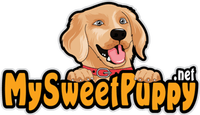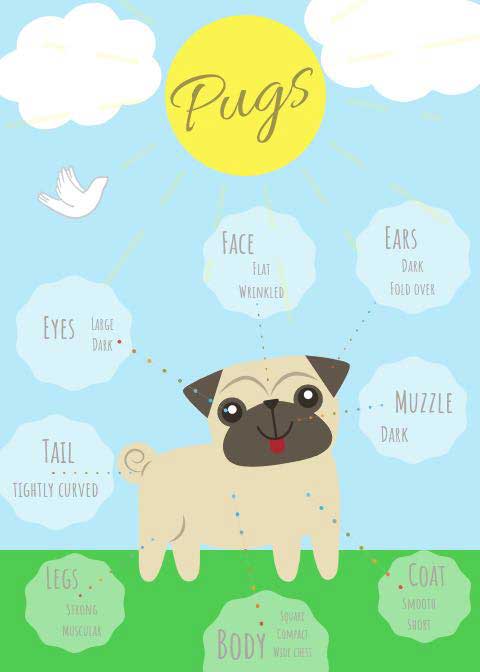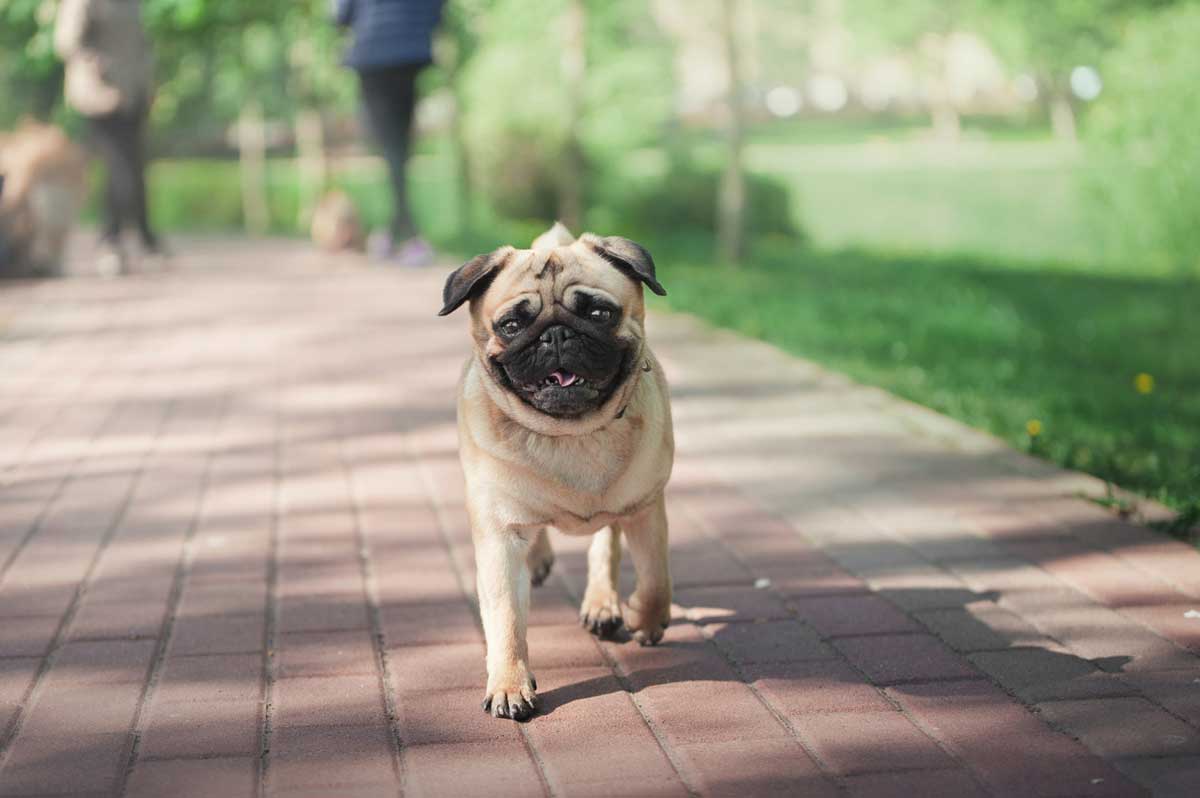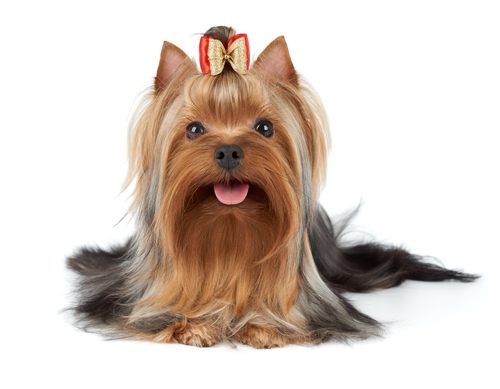The pug is probably one of the most cherished companion dogs of today. A mixture of their wonderful temperament and slightly comical build, makes them amusing to observe and be with. However, once you get past the furry appearance of the pug, you will find out that it is a loving breed that is a fantastic and loyal companion. Pug owners enjoy every second they spend with this lovely breed.
The pug has evolved over the last couple of centuries and while this has given this breed the adorable charm they have today, the breed is prone to a few medical issues. However, responsible dog owners will be quick to address these issues and to give their dog a happy and comfortable life. If taken care of properly, the pug will give its owner a happy life as well.
InfoGraphic
Where Do Pugs Come From?
Though pugs are now much-loved around the world, they actually originate from China. Unlike many other small breeds, pugs were bred specifically to be companion dogs as far back as the Song Dynasty In the 12th century and were brought to Europe as far back as the 16th century.
Pugs were not bread for their ability to hunt or their prowess to catch small critters and vermin as is the case with many other short breeds. Pugs were bred solely for their placid temperament and the fact that they are adorable.
From Molossus to the Pug
The ancestor of the pug is the ancient Molossus dog, which is now extinct. As this dog was first bred in Ancient Greece, it is proof of regular dog trade between Ancient China and the Hellenic world.
The pug and its cousins in Europe went in quite different directions, which is obvious right from the start. Other Molossus dog descendants are the St. Bernard, the Great Swiss Mountain Dog, and the Sharplaninac (Yugoslav Shepherd), which are all many times bigger than the pug. The only dog similar in appearance is the English Mastiff, due to its color, but is still around ten times its size in terms of weight.
All of these dogs share some characteristics, but as pugs are much more adapted to living indoors, they are usually the preferred choice for modern pet owners.
Pug Physiology
This breed is instantaneously recognizable because of its small, stubby stature, their distinctive round heads, curly tail,and wrinkly, squishy face. These features have probably assisted the pug in being one of the most recognizable dog breeds in the world today.
As pugs have been bred for these specific visual traits, some of their health has been compromisedthrough excessive interbreeding. Every pug owner should consult with their vet to make sure that their furry friend remains in good health, as well as ways to safeguard that health.
Pug Build
Pugs are recognizable by their small and stocky body. They have relatively short legs and boast quite a bit of muscle for their size. A healthy pug should weight around 16 pounds. While pugs deal with additional weight easier than many other breeds, obesity can be a serious issue for them as they are usually not that active, especially as they age.
The most prominent feature of the pug is its wrinkly face. As with other similar breeds, it has some issues with eating, as it chomps down on food. If the food bites are too large, it will ingest a lot of air, which can result in gastric problems.
Size and Growth
The average adult male put will grow up to 12 inches in height and weigh between 14 and 18 lbs. Females are slightly smaller, coming in at around 10 inches.
As they are considered a toy breed, there is no specified breed standard for height, meaning that some pugs will be smaller or larger than the average range without exhibiting any medical issues. As is the case with most small dogs, the puppies will grow relatively quickly, leaving a longer period of adolescence for pugs to achieve their full size.
General Health
It is often emphasized that pugs suffer from quite a number of medical issues. This is because the breed has experienced a lot of negative selection, where the specimens were selected just for their appearance, and not their health. Because of this, they are susceptible to problems with their eyes, such as entropion, proptosis, andeasily scratched corneas.
Breathing
Due to pugs having compact airways, they sometimes have problems in regulating their temperature. This issue, in combination with their thick fur, can quickly become a serious problem if their body temperature surpasses 108°F.
This leads pugs to lead a sedentary lifestyle and exercise that much.Think if this breed as being a couch potato and needs to be pushed a little to do a little exercise.
Digestion
Pugs generally don’t have any issues with their digestive system, apart from their mouth. Due to their flat nose,pugs often consume a lot of air when eating, leading them to have a lot of gasses. Fortunately, using the correct types of food, this issue can be easily avoided.
Activity
Pugs are by no means active dogs. They like light walks that don’t last too long and not when it is too hot outside. Unlike many other dogs, pugs actually benefit from being in rooms with the AC on, as it will cool them off.
Because of this lack of activity,pugs are at risk of obesity. Being overweight is the primary issue for pugs becoming ill and it is something the dog owner will need to be concerned about. What little activity they can manage should be done regularly.
A good rule of thumb is that, if you are sweating after the walk, the pug is overheating. Therefore, take a damp cloth and brush his fur to assist him in cooling off.
Pug Psychology
This breed has a very welcoming character and is very calm around both people and other animals. Additionally, it has no issues with small children, which is rare for small dogs and is exceptionally good around the elderly.
Although pugs are not the most intelligent of canine breeds, they are quite smart. They have been bred to be good companion dogs and are able to fulfill this role without any problems.
Finally, apart from sometimes drooling, pugs are quite clean animals and try to keep their surroundings tidy. All of those features combined make the pug the perfect house dog.
General Behavior
Pugs are generally sedentary and don’t like moving too much especially if they don’t have to. If it were up to these little furballs, they would have you come sit beside them and just turn to have a belly rub. They do enjoy mild play and have a positive disposition, but don’t expect them to run fanatically after a ball for a long time.
Their behavior fits in perfectly with the lifestyle of senior citizens, as they enjoy sitting in the lap and being petted for hours on end…and then some more.
Pugs and Kids
Unlike most small dogs, pugs generally like kids. They will not follow them around as much as other dogs, and generally don’t play as much, but like being around them. A pug will certainly not try to wrestle with a child for dominance, or bite them to establish superiority, as would some other breeds.
Unless a child is openly aggressive towards the pug, it will not be aggressive towards the child. Additionally, pulling on the fur is not that painful for this breed and sometimes even helps the dog massage inside his skin rolls. As this is the most common mistake children make with dogs, your child will be safe with the pug.
Pugs and the Elderly
Most dogs like spending time with the elderly, especially small dogs. The slower and more pronounced movement, combined with a softer tone of voice, brings dogs at ease. In fact, the pug is pretty much the same and enjoys the company of elderly people. As they are able to sit in the lap and be petted for indefinite amounts of time, they are quite adept in following the elderly around.
Pugs are a welcome addition to any nursing home or household that has elderly people. In these homes, the most sedentary person that is willing to pet him will be his favorite person in the home.
Pugs Love Affection
To be honest, almost every dog loves affection, regardless of the species. However, unlike most dogs, pugs will demand to be petted. If, for some reason, you have not started your belly rub even though you are at arm’s length, they will come and try to force themselves under your arm.
This breed loves human contact. Ifheisn’t on your lap yet and you haven’t invited him,he will come jump on your lap and lie down with his back you. To have a happy pug, all you have to do is make sure you give him enough attention—and even more love.
Training Your Pug
While pugs can be trained, they quickly reach their limit when it comes to tricks and commands. As they are not really active, they will not listen to commands much and almost certainly won’t rush somewhere or catch something.
As far as basic obedience training goes, pugs are easy to teach. Not only are the social and intelligent enough to understand what is being asked from them, but they are also very fond of treats. A young ug puppy will do almost anything for treats and it is up to you as the dog trainer to use that fact to its full extent.
Are Pugs Show Dogs?
As pugs love being the center of attention, they can become very good show dogs. As they are not athletic, some parts of the competition might not be for them, but they generally enjoy having large crowds observe them.
The important thing to remember when training your pug for a show is to take everything slow and let them relax and cool off as much as they need. Being too strict on the dog might cause health problems, as well as further reluctance to cooperate.
Basic Obedience
Because of their friendliness, pugs are very willing to start with obedience training. When a pug is an adorable littlepuppy they will have a bit more energy and will to do more things—this is the perfect time to start with their training. Additionally, you can give them more treats when they are young, which is their preferred method of payment for being good dogs.
Finally, it is possible to tech a pug most dog commands, but don’t expect them to obey them instantly, especially the more active ones. They will listen to you only to the extent that it doesn’t impact their health.
Advanced Training
Pugs are not built to withstand advanced training. Any advanced actions that need a lot of force and activity will find the pug to be too stocky and too small to do them. Some aspects of advanced training may be incorporated into their basic obedience training, but that would be their limit.
Dog owners should remember that pugs are exclusively a companionship dog so don’t expect them to do something that they are not meant to do.
Pugs as Service Dogs
The most important thing here is to separate service dogs from dogs that serve as emotional support. Due to their size and athletic ability, pugs don’t make good rescue dogs or are able leading people who are visually impaired.
That being said, they are excellent as emotional support animals. Pugs are calm, composed, and good with people—even crowds—making them the perfect choice for emotional support in places such as planes, trains, or busses.
Because they are easy to train for basic obedience, it is not difficult for a pug to obtain an ESA certificate and to be able to provide this service to anyone that needs it.
Pug Nutrition
This breed is easy to feed and difficult to feed at the same time. The rarely have any allergies and can digest most foods easily, including some human food. The biggest problem pugs have is not the food they eat, but the quantity of that food, as well as the air that they often gulp down when swallowing the food.
As they are born with a flat face, their nutrition should be adjusted from birth to accommodate their small mouth. This will usually mean very small bites of firm food.
Unlike most other dogs, pugs don’t need to have a protein heavy diet. In fact, they benefit from a more diversified diet and significant carbohydrates.
Pug Puppy Diet
Compared to their senior years, puppy pugs need a bit more energy and a bit more protein. This will still be significantly less than other breeds would need in the same age but much more than adult pugs would need.
Once your tiny puppy has stopped weaning, start feeding it very small chunks of meat and vegetables. Softer kibble is also okay and you can switch to harder dry dog food once their teeth have formed.
Adolescent Pug Diet
Once they grow up a bit it is possible to add more generic kibble to their diet and to supplement that with treats and human-grade meat. As your pug will eat anything and everything that is in his bowl, it is important not to overfeed the dog. During this period, it is essential for your dog to get all of the necessary vitamins and minerals that will promote bone growth and good organ health.
Focusing on your dog’s health from an early age will probably diminish the number of times you will need to call your vet once he grows up. This diet should continue through adulthood.
Senior Pug Diet
As he grows old, your pug will not need as much protein and may just need small amounts each day. It is far more important at this point to feed your dog with enough dietary fiber as well as trace minerals.
If possible, only select specialized food for elderly pugs, as it is otherwise time-consuming to prepare their food.
Final Thoughts
All issues aside, pugs are magnificent dogs to have in your home, regardless if you share that home with children, the elderly, or other dogs and animals. Pugs are adorable little dogs that have been perfect human companions for centuries.
But, remember that pugs can take a lot of work and that they can suffer froma number of medical issues. You will need to be ready to spend some time preparing their meals, cleaning their fur, and, of course, rubbing their belly. If you have your vet on speed dial and take good care of your flat-faced furry friend, you can be sure that most belly rubs you will give your pug will be for recreational purposes.
I grew up in a household that was filled with animals. I believe that my fate as a dog-loving person was sealed in early childhood since my parents owned several dogs of varying sizes and breeds. There was no choice but to take care of and learn about dog habits and the best animal care practices — otherwise, I’d be clueless about how to go about the creatures I was surrounded by day and night.
As a life-long puppy lover, I know a thing or two about dogs and how to go about caring for them in the best way possible. Although I’m not a professionally trained dog behaviorist, trainer, or veterinarian, all of my knowledge and experience with canines comes from a place of love and a deep-rooted passion for dogs and animals in general.
Seeing as dogs kept me company throughout every stage of my life, I decided to follow a different path in my academic life and obtained a Bachelor’s and Master’s degrees in Marketing Management and Digital Advertising, which ultimately allowed me to combine my professional training and personal experience by creating the ultimate dog lover’s resource website! Along with my husband, Dave, I run MySweetPuppy for like-minded dog lovers who want to have a single, clear, and reliable information source about anything and everything related to dogs and their well-being.





